The picturesque and heavenly Sangla valley — alternatively known as Baspa valley — of Kinnaur attracts backpackers and travelers from across the globe.
It is named after Sangla village, the largest in the Sangla valley. People of Kinnaur refer to the valley as the Tukpa Valley.
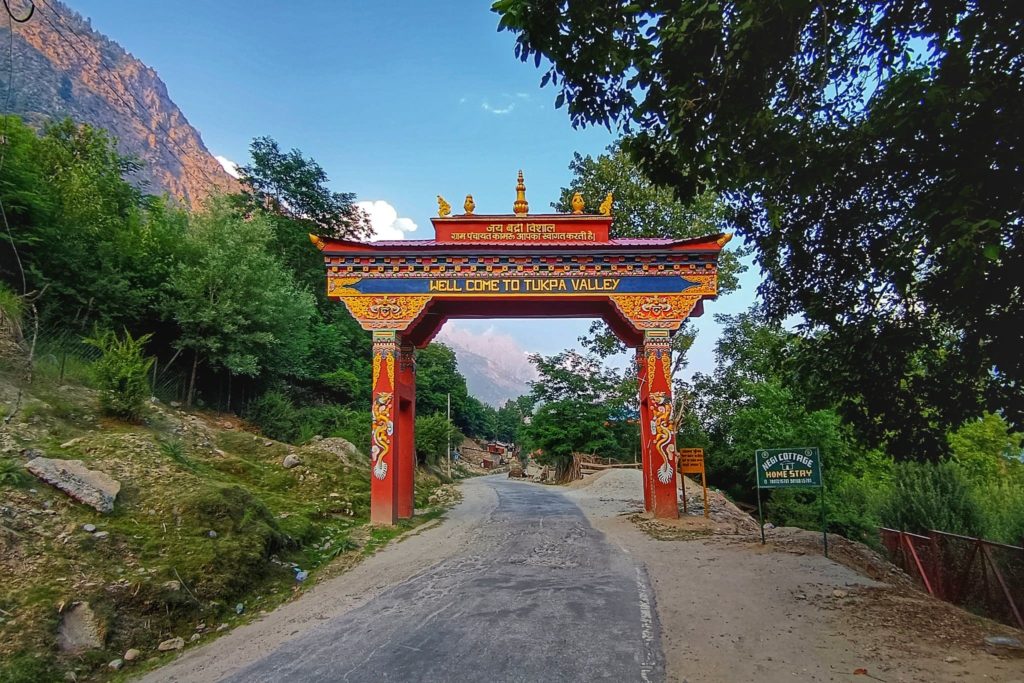
Located in the middle of the valley, 18 km away from the nearest highway NH5, Sangla has become a must-see for hikers, backpackers and everyday travelers.
There are plenty of charming places to visit in Sangla valley such as Kamru village and fort, Basteri, Rakcham, Chitkul, Chansu village, Ranikanda and Dumti meadows.
Sangla valley
The valley is acclaimed for spectacular scenery and indigenous architecture of Sangla Bering Nag Temple, Kamru village fort, Sangla Buddhist monastery.
Strolling along the beautiful Baspa riverside and riverbanks is my favourite thing to do in Sangla valley.
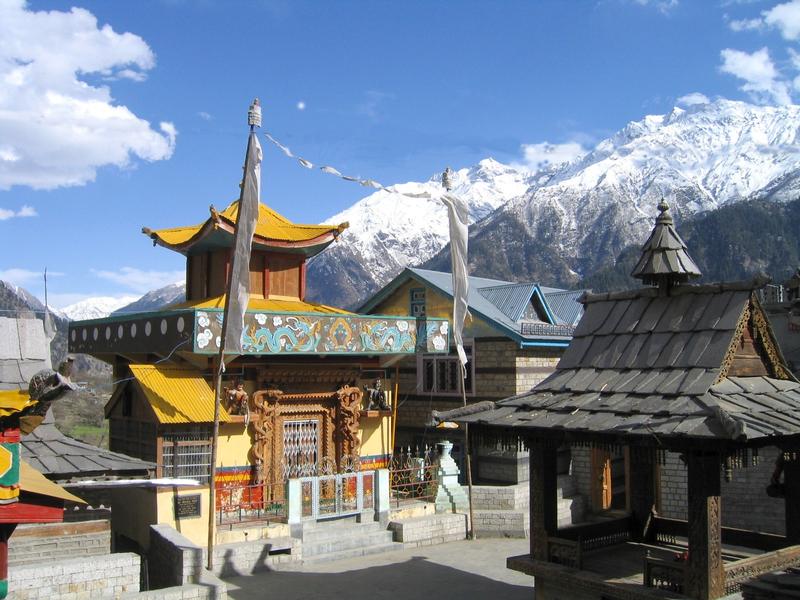
The standout of the valley is India’s last village from Tibet side – Chitkul.
Sangla valley is also the gateway to many high altitude and treacherous Himalayan trails such as Lamkhaga Pass, Rupin Pass and Borasu Pass Trek that either starts or end in Sangla valley.
Best time to visit Sangla valley in 2025?
Sangla Valley experiences a temperate and dry climate, though the valley receives more rain than the rest of the regions located in upper Kinnaur, i.e. Sairag, Jangramang, Tirung and Ropa and Hangrang valleys or Kinnaur. It receives highest rainfall in July and August Month.
This increased rainfall compared to surrounding areas makes Sangla Valley lusher during the monsoon, while the rest of upper Kinnaur remains predominantly dry.
Weather of Sangla valley
- Late November to Mid April:
Temperatures are cold to bitterly cold, especially at night. Snowfall is typical from late December through early March. This season is ideal for those seeking to experience fresh mountain snow, photograph snowscapes and experience the silence and traquality of the Himalayas. - Mid-April to September:
This period offer pleasant, comfortable weather. Days are mild and night are plesantly cool, making it the best season for sightseeing, hiking, trekking, and enjoying the natural beauty of the valley. From mid-April to mid-May, the villages of Sangla, Batseri, and Rakchham are beautifully transformed as their apricot orchards burst into pink and peachy blooms. - October to mid-November: During October and early November in Kinnaur, days remain comfortable with crisp, clear weather, while nights and early mornings turn noticeably cold. By late October and into early November, temperatures often begin to dip to freezing levels at night, especially in higher-altitude regions like Chhitkul and Rakchham.


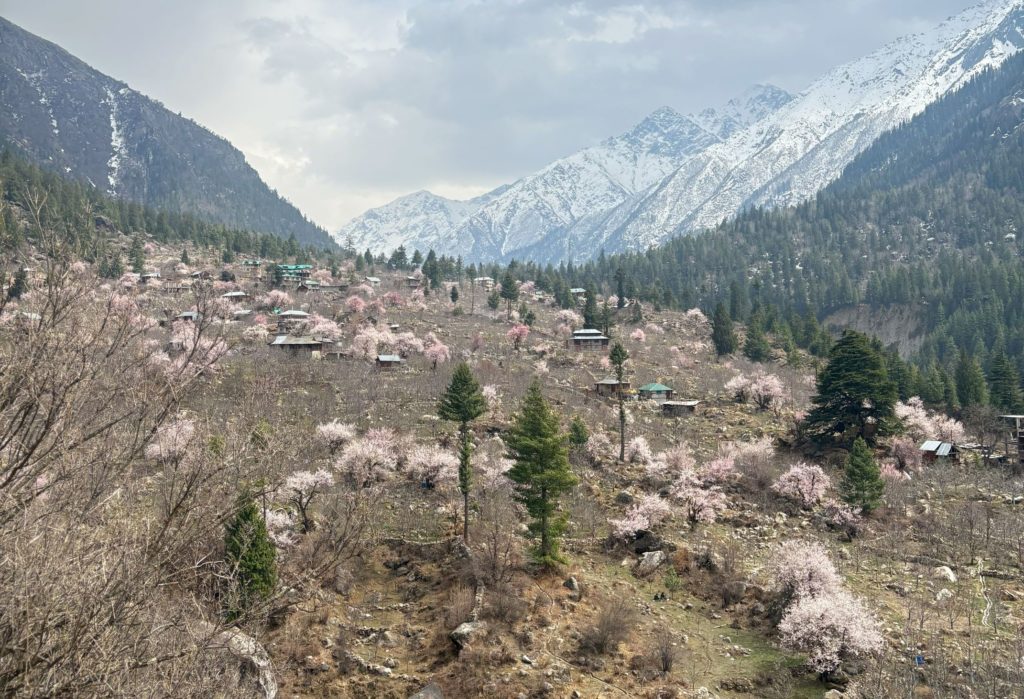
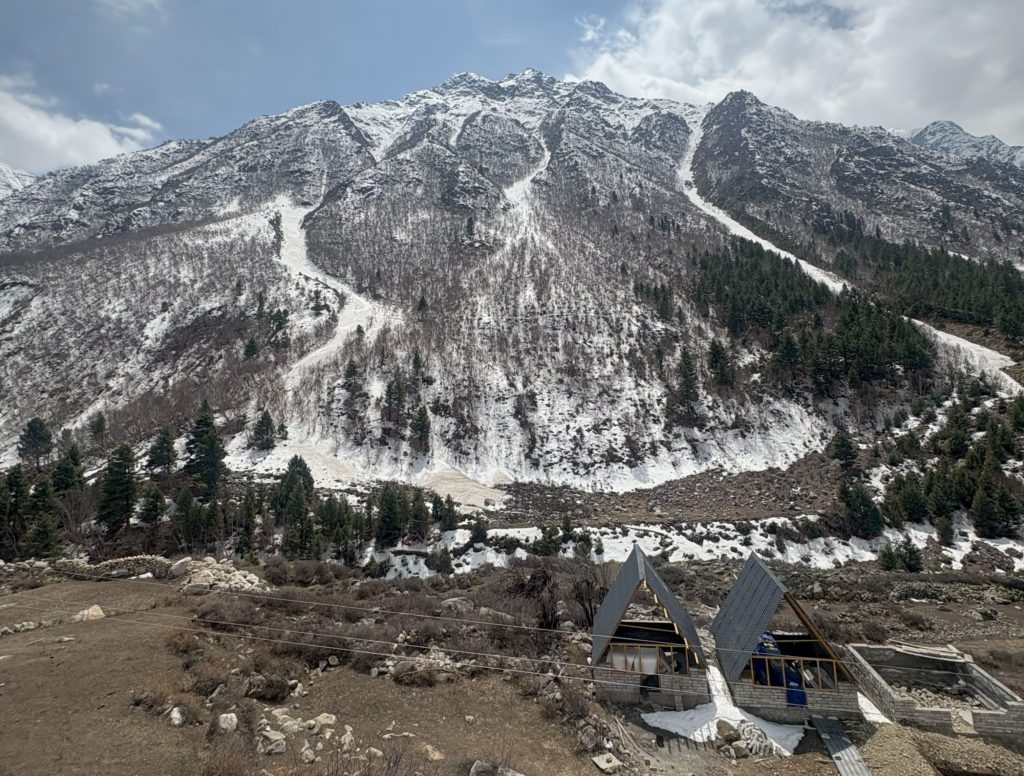
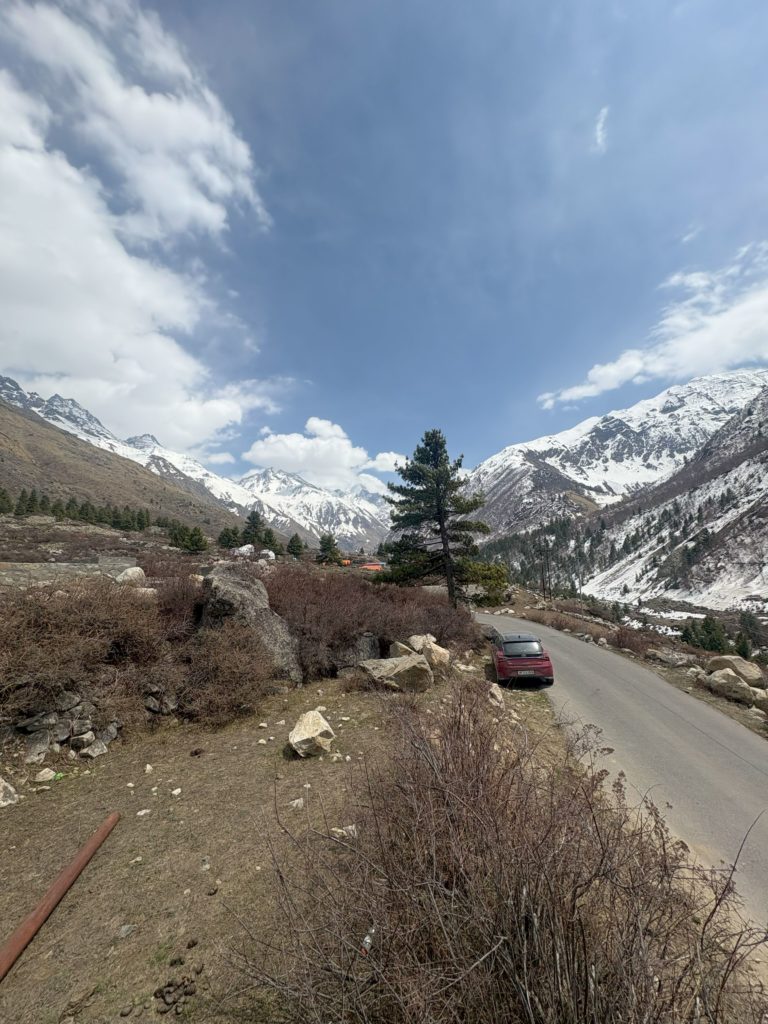
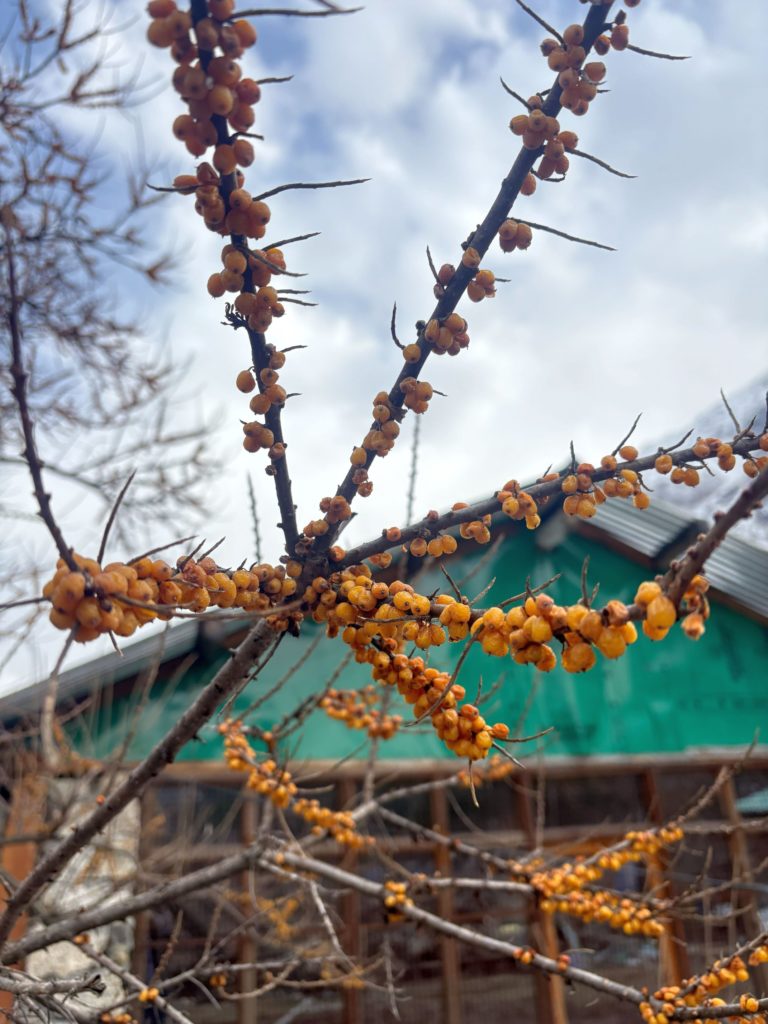
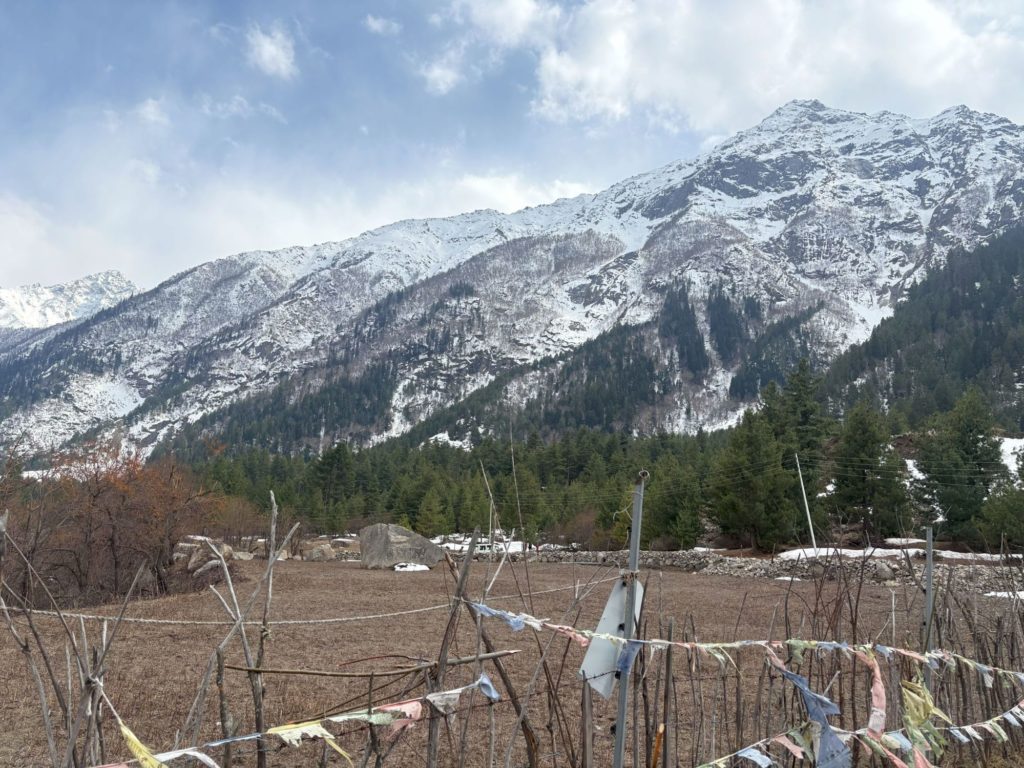
The weather of Sangla valley
Sangla valley is located in the temperate zone. The average yearly temperature of Sangla hovers around 17 °C. It peaks in the months of May and June when it reaches 30 °C, but the weather remains pleasant.
In July, August and September the average rainfall reach its apex point. It crosses the 300 mm mark in the month of July.
After July, it starts decreasing and the average rainfall plummets to less than 100 mm in September month. In October, it barely rains.
With dwindling rains, temperature graph also takes a nose dive, and it crosses below 5 °C mark in December month.
How to reach Sangla valley?
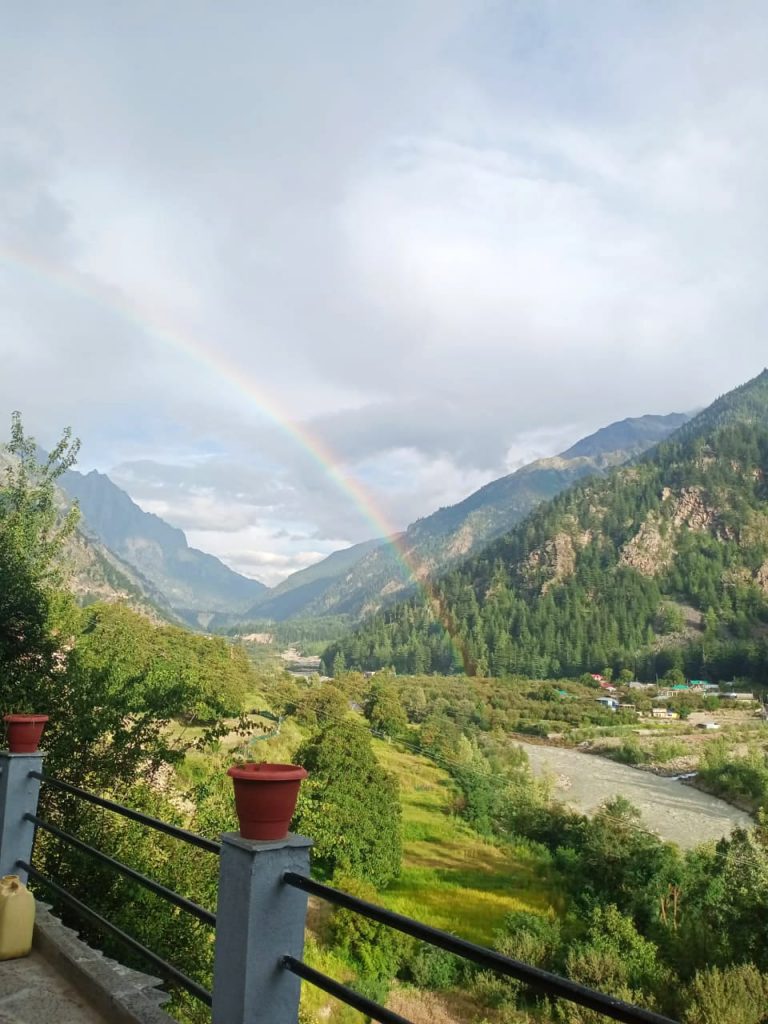
Shimla, the capital of Himachal Pradesh, is easily accessible from Sangla.
From the Shimla ISBT (Tutikandi bus stop), many HRTC buses run on Delhi-Chandigarh-Shimla route.
Mostly the buses leave from Chandigarh in the night, then reach Shimla in the morning.
An HRTC bus will leave for Sangla or Rakchham in the morning around 7:00 AM from the Shimla Bus stand.
The long 12-hour bus ride is an adventurous one!
There is a Bus with number HP 25 A 3043 which runs every alternate day from Shimla around 7:00 – 7:10 AM from Shimla ISBT, Tutikandi to Sangla.
Related: Kinnaur Bus Timetable (New Timings)
One can call Shimla Bus Depo Control Room for details on Bus timings, they will help you. For us, Shimla to Sangla HRTC Bus road journey cost just about Rs. 420.
Tip: Women travellers get 50% concession if they travel in HRTC buses.
Tribune, Himachal
The helpline number of Shimla Bus Depo Control Room is 01772656326 and Reckong Peo station in-charge number is 01786222444.
If you are visiting Sangla with friends or family, try to take or book Innova, XUV, Tata Sumo or Tempo Traveler from Shimla. This will help you to stop & spend enough time en-route Sangla.
The journey from Shimla to Sangla is Epic & Deadly dangerous one with Breathtaking views of Sutlej River, High Mountains, Mountain Villages, Lovely Bridges, Some Beautiful Towns of Kinnaur Valley.
Distance from different cities
If you are traveling from the different States of India, it is better to reach Delhi or Chandigarh by Flight, Train or other transport options then plan accordingly in advance. This will help to reach Sangla without any transport issues.
From Delhi: Around 590 Kms. via NH44 and NH5 (Delhi to Sangla)
From Chandigarh: Around 354 Kms. via NH5 (Chandigarh to Sangla)
From Shimla: 240 Kms. via NH5 (Shimla to Sangla)
How to reach Sangla from Shimla: From Shimla, Take following route to Sangla: Shimla –> Kufri –> Fagu –> Rampur –> Tapri –> Karcham –> Sangla
Altitude: Sangla town is 2600 meters above mean sea level.
Bucketlist best places to explore in Sangla valley
Kamru village
From Sangla town, the village of Kamru is a 2-kilometer easy hike away. The Kamru fort & temple is lesser visited place by the tourists. Most skip this place and drive straight to Rakcham and Chitkul.
While in Sangla, don’t forget to check out these ancient Buddhist architectures. You must visit this place if you’re in Sangla, because it’s incredible!

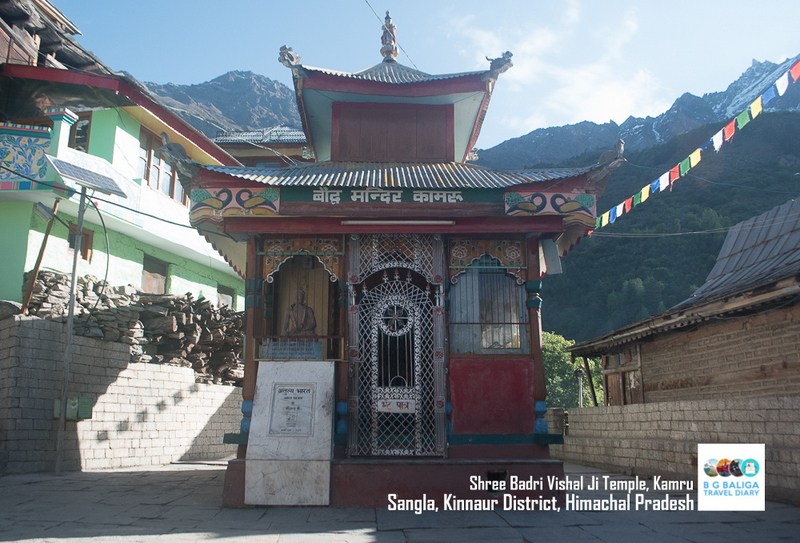
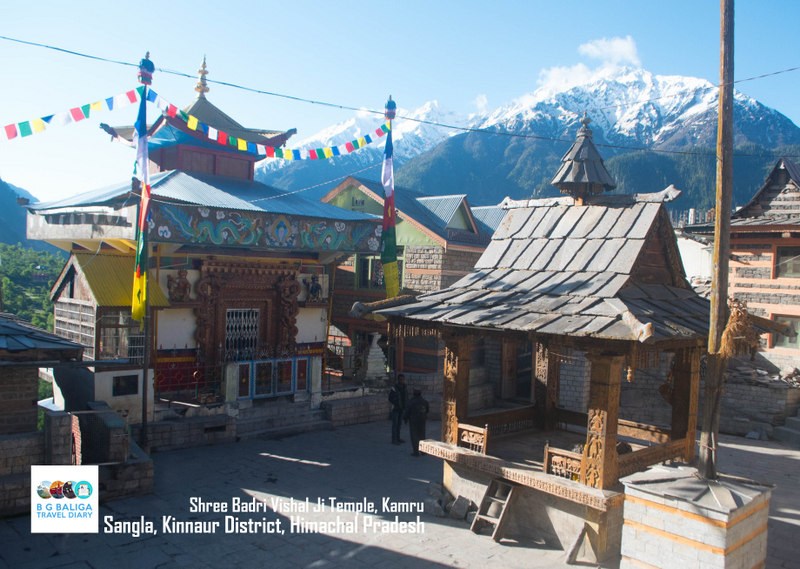
Kamru Temple: Kamru Temple is situated just below Kamru Fort. This temple is called Shree Badri Vishal Ji Temple of Kamru Village which is also a 15th century shrine of Lord Badrinath, which hosts a festival every three years.
Kamru fort
One of the oldest forts in Himachal Pradesh is Kamru fort. It is perched high above in the Sangla Valley of Kinnaur district. Fortress Kamru dominates the valley’s history and is a must-see. From Sangla town, it’s a 2-kilometer walk to the towering fort at 2600 metres high above sea level.
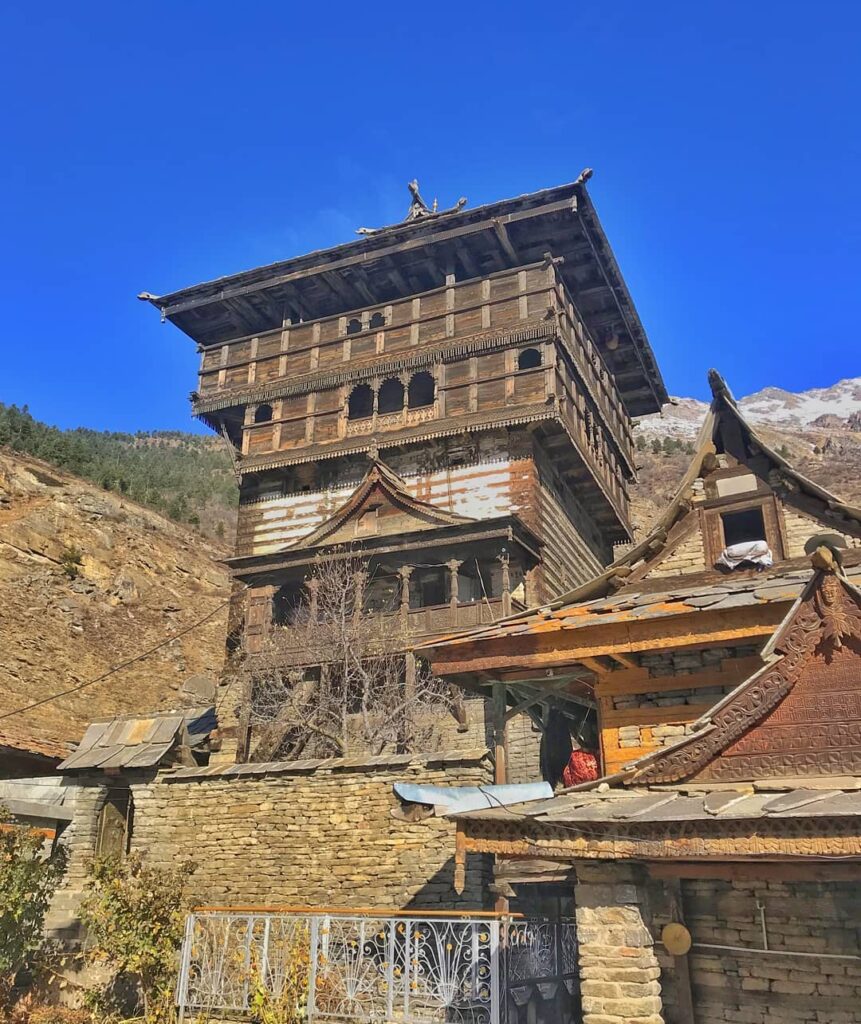
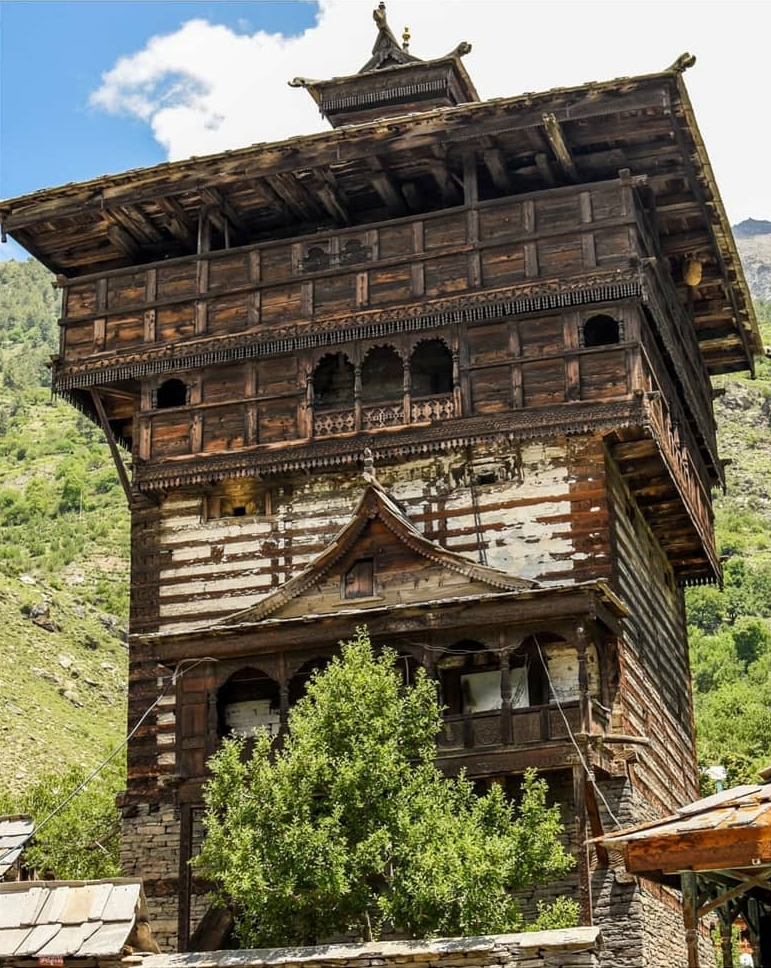

This fort’s unique features include an exotic image of Lord Buddha on the main gate and an image of Kamkhya Devi. Kamkhya Devi’s image is said to have been brought from Assam to the fort’s third level.
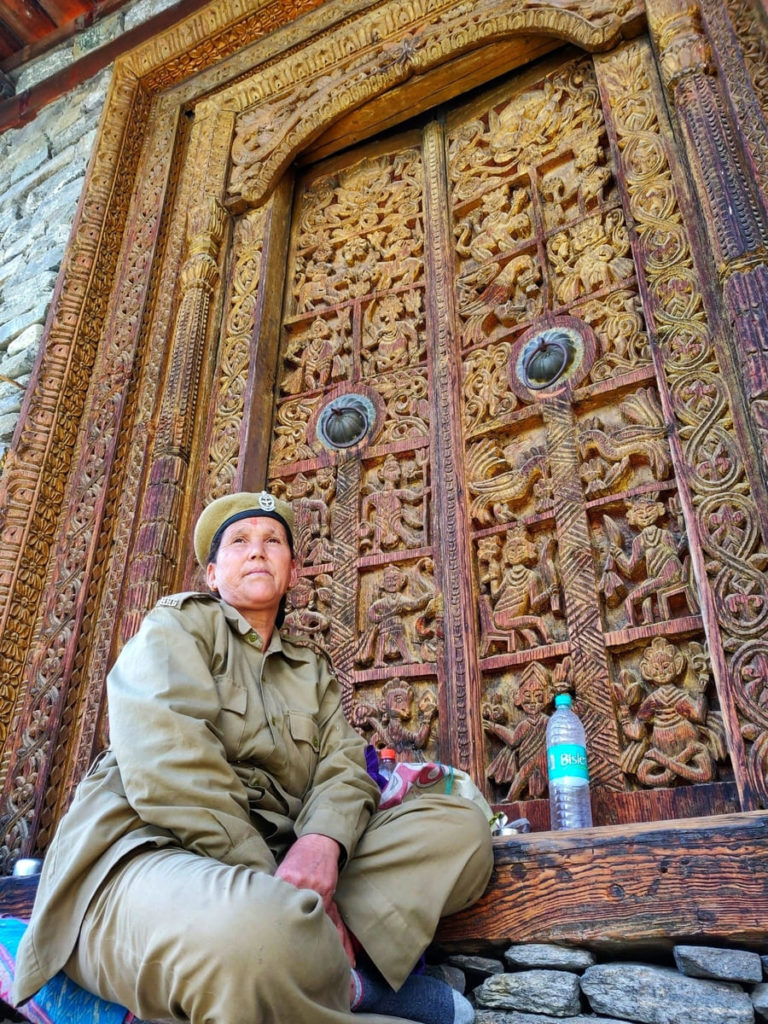
Kamru fort seems like being placed over a packing of dressed stone that acts as a pedestal for an exalted piece of art. The tower possesses an elegant wooden balcony.
There are a number of interesting myths attached to this fort. This fort is ruled by 100 plus dynasties of Himachal. Except Kamkhya Devi Idol which is situated near tower-like Fort, other parts of the fort are restricted for public viewing (including local people of Kamru village)
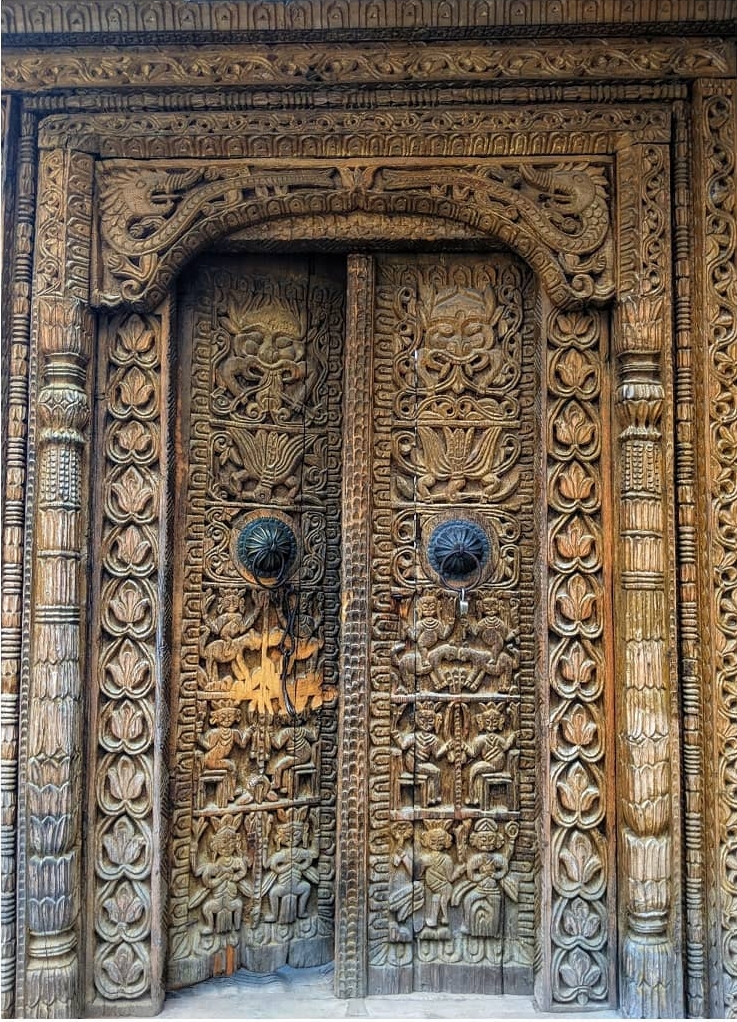
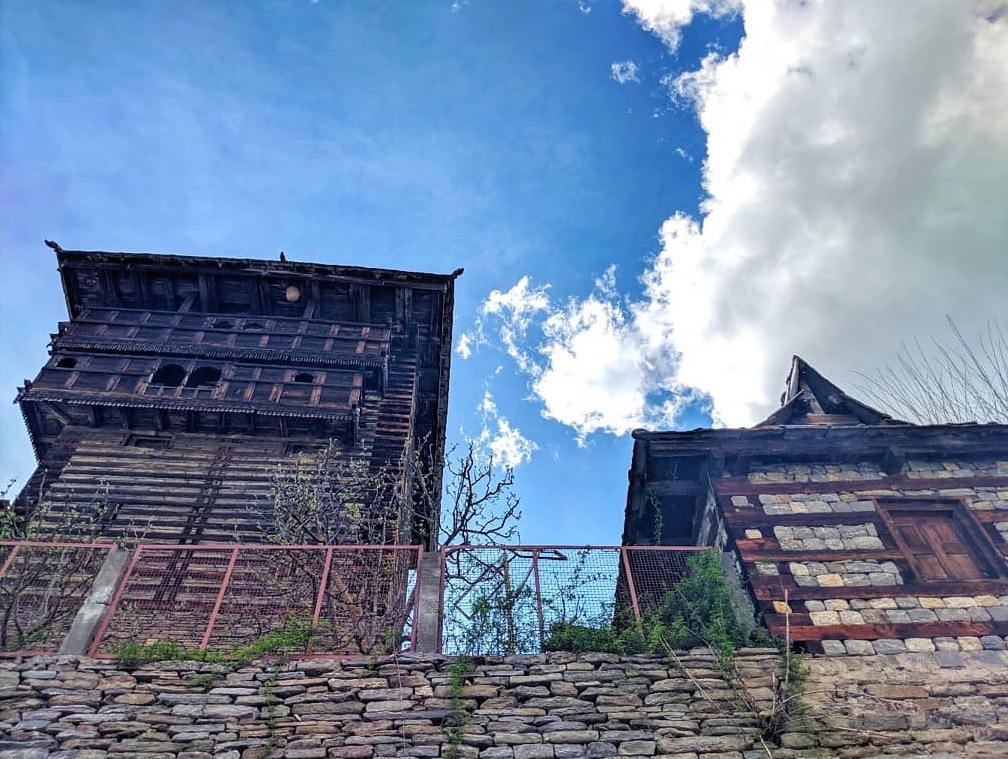
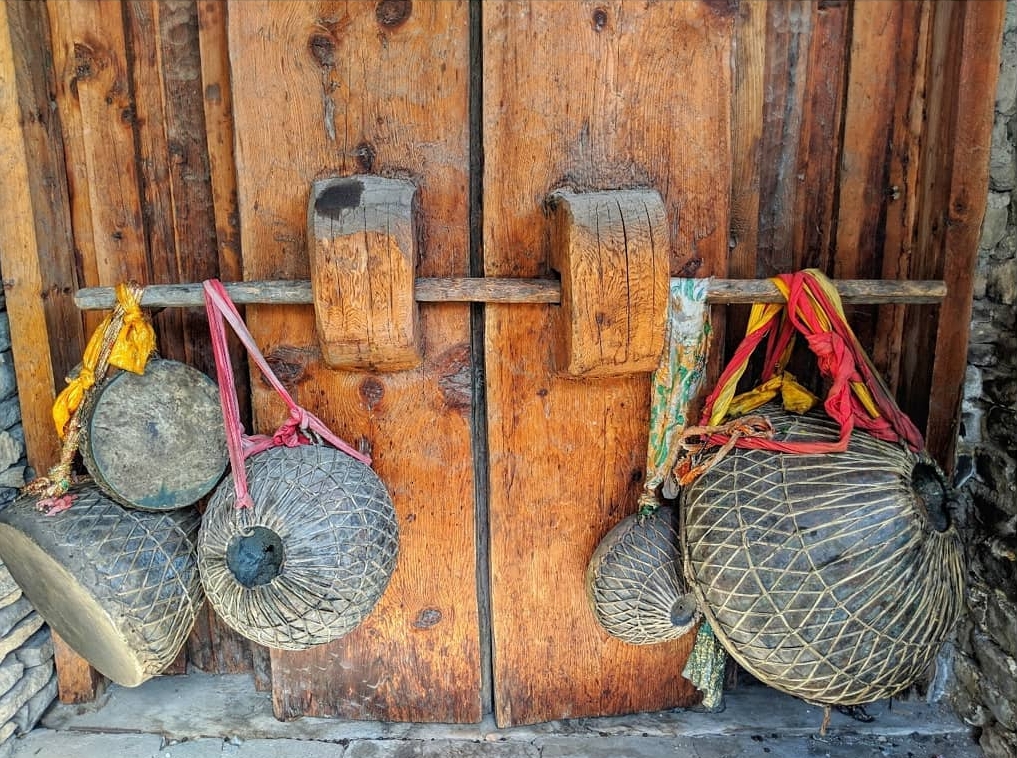
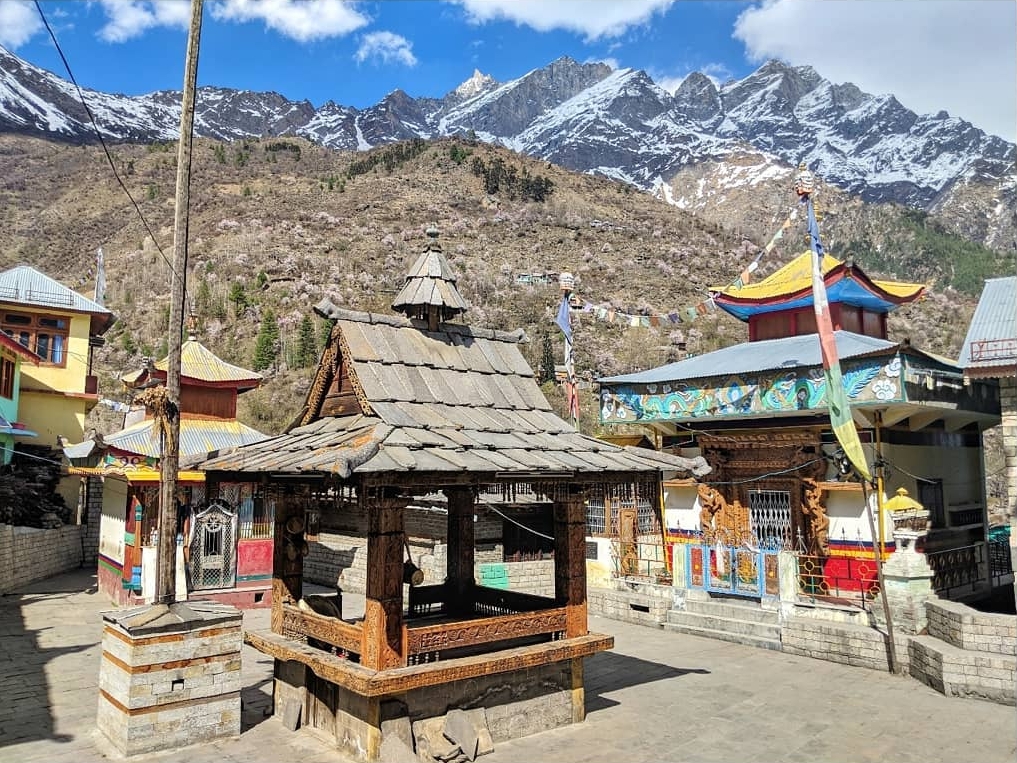
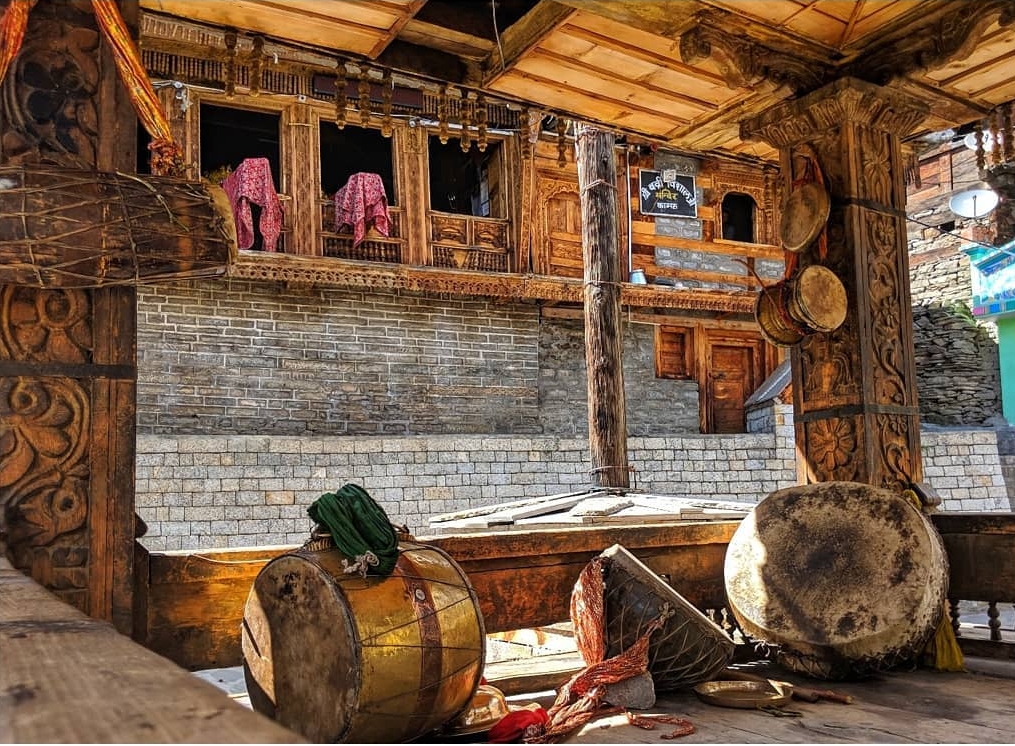

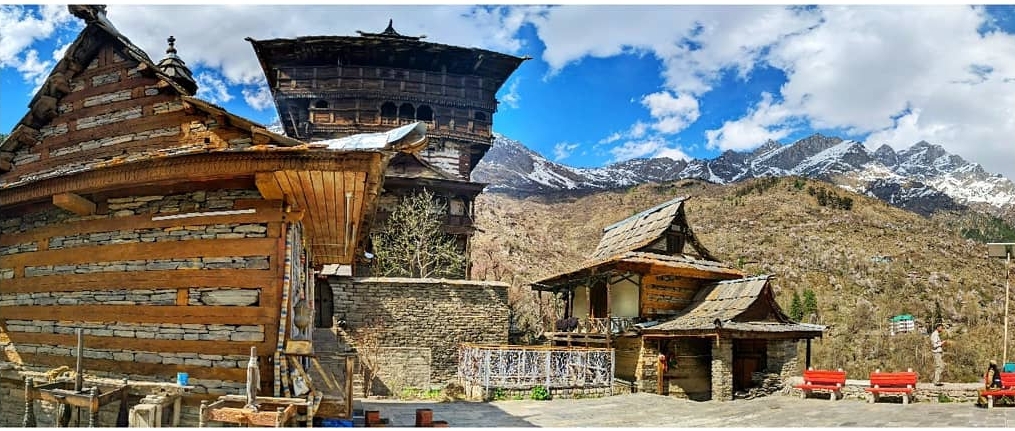
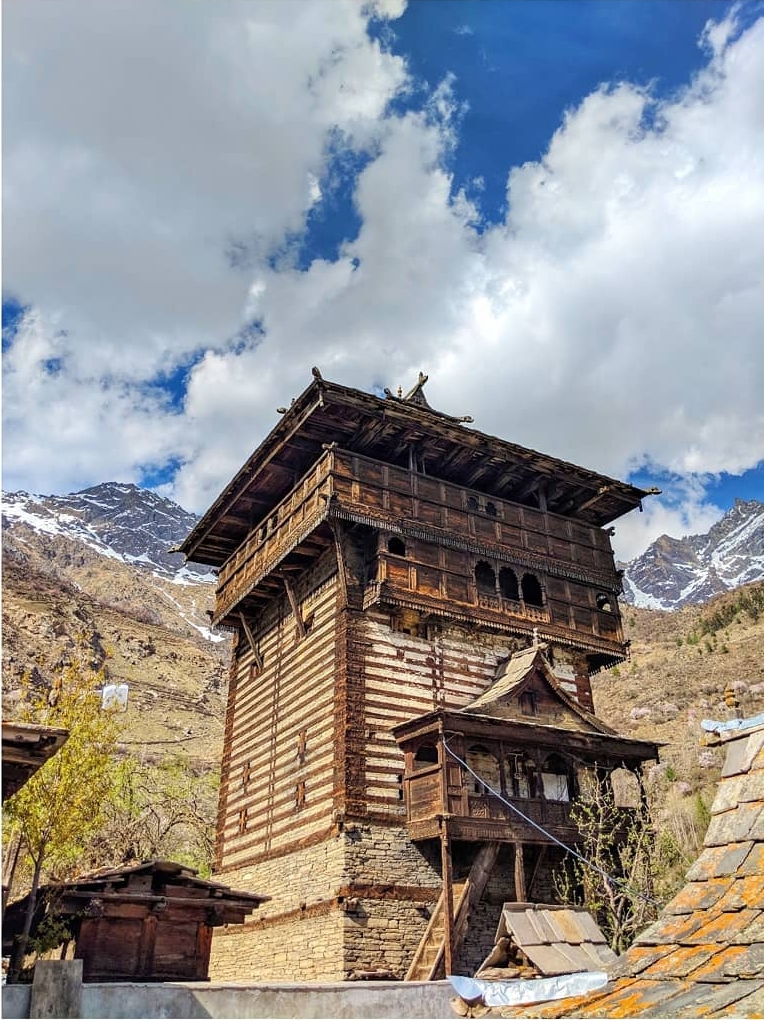
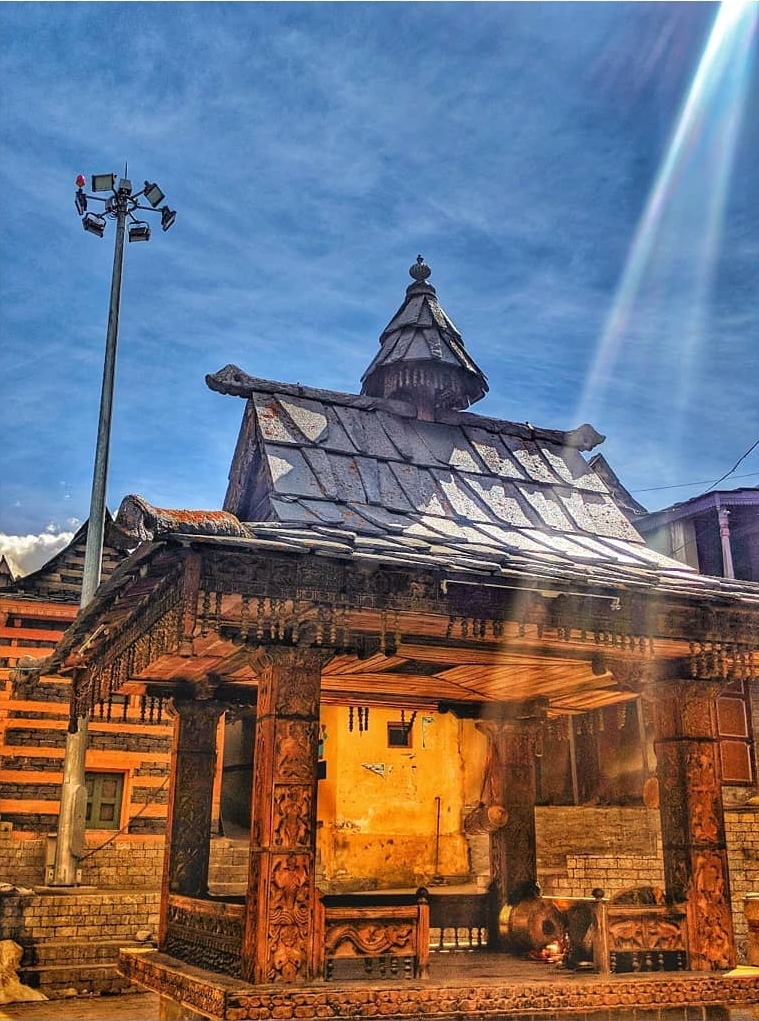
Images & text: @wanderwithvaibhav / Instagram
Only families of Himachal Bushahr dynasty get to go inside the fort. Virbhadra Singh, former chief minister of Himachal Pradesh, belongs to the royal family of Bushahr.
He recently visited this fort to attend a festival (as informed to us by lady guard of Kamru Fort Chandru Negi). We visited this place during early morning of 19th May 2017.
The Sangla Valley is a deeply carved cleft between burly mountain slopes, where evergreen forests rise to alpine meadows crowned by snowy summits. Village cores here feature temples built in traditional Kinnauri style of timber and stone with heavy slate roofs. The road up the valley leaves the NH5 at Karcham hydroelectric dam. Much of the first 15 km to Kupa is cut hair-raisingly high into an almost vertical cliff face. Sangla, the only town, hides its fascinating old section completely out of view from the road. Thereafter, the valley has essentially just three villages, including Batseri across the river, which has won prizes for cleanliness, and Rakchham, which sits in an intriguing chaos of large boulders. After the Mastrang police checkpoint (show your passport), the already beautiful valley gets ever more spectacular with sharp-sculpted snow peaks towering ahead above Chitkul. All main settlements have temples worth perusing.
— Lonely Planet India Guide
Only foreign nationals have to show their passports at Mastrang check post.
Sangla village Buddhist Monastery
There is a Buddhist Gompa (monastery) situated in the heart of Sangla Town. As per the monks of the monastery, this monastery is recently built, and it is a very good place to meditate and relax. Don’t miss exploring this monastery of Sangla!
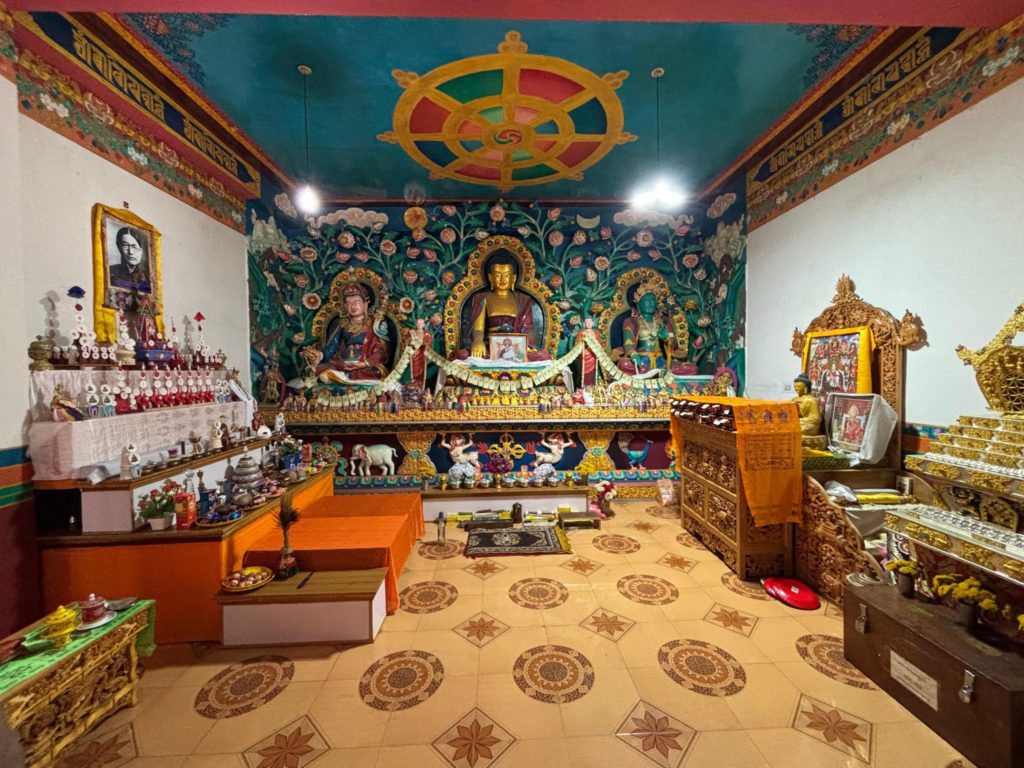
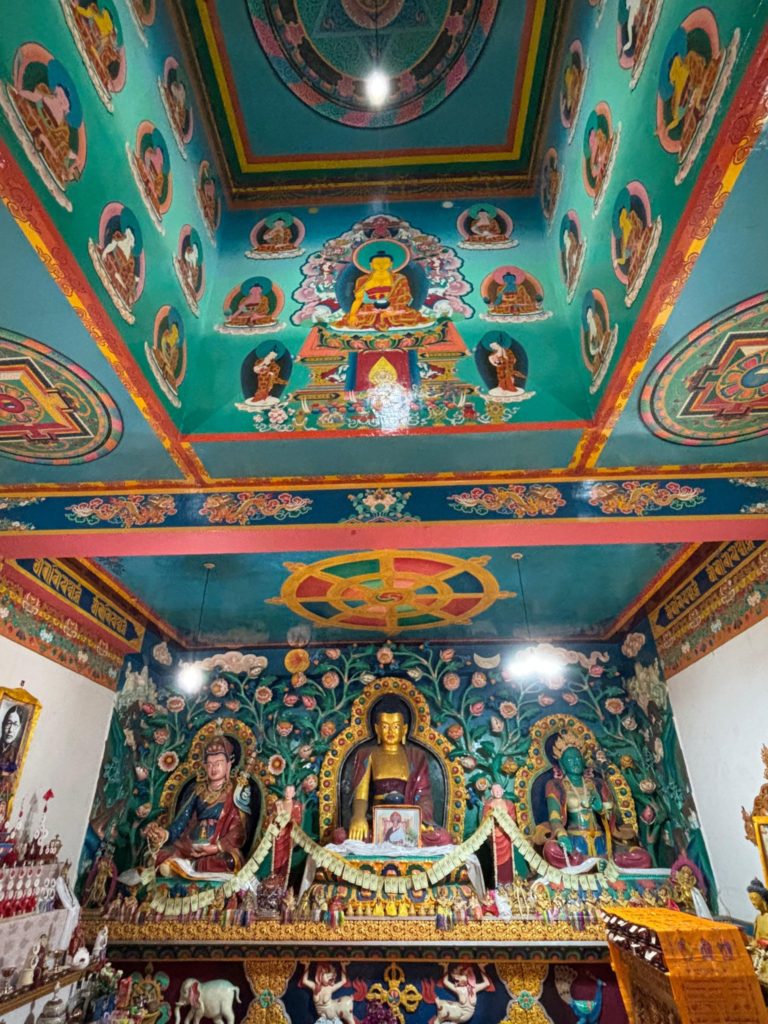
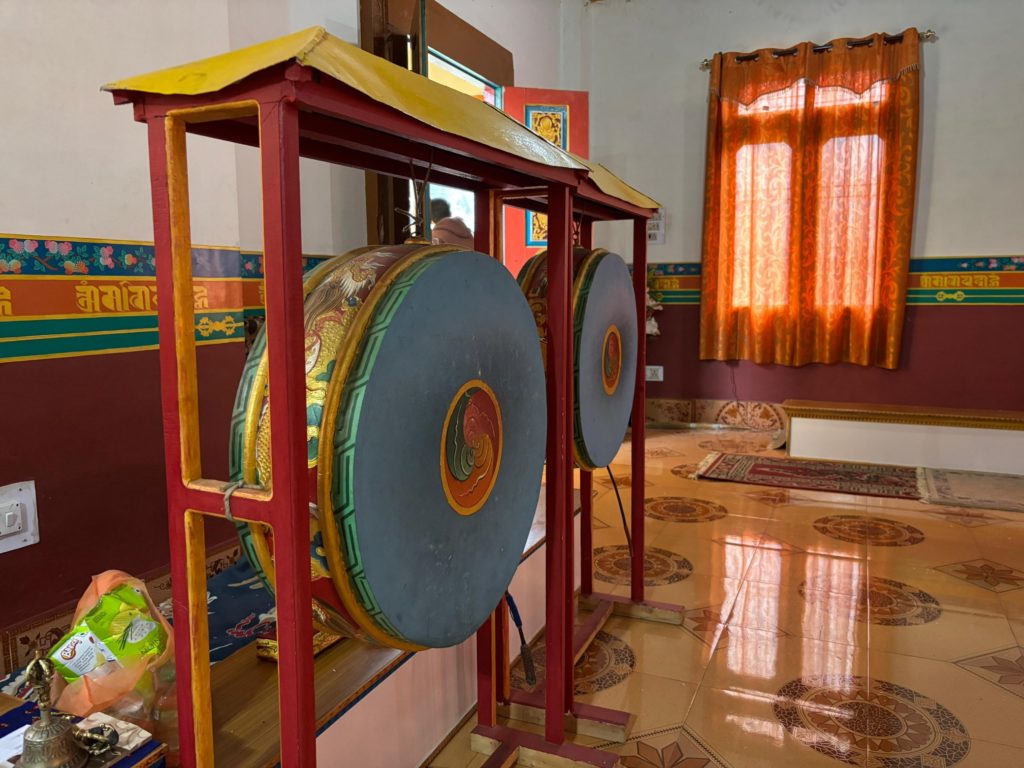
Bering Nag Temple
Shri Bering Nag is a deity of Sangla villagers. The temple is acclaimed for its exquisite and elegant woodworking and architecture.
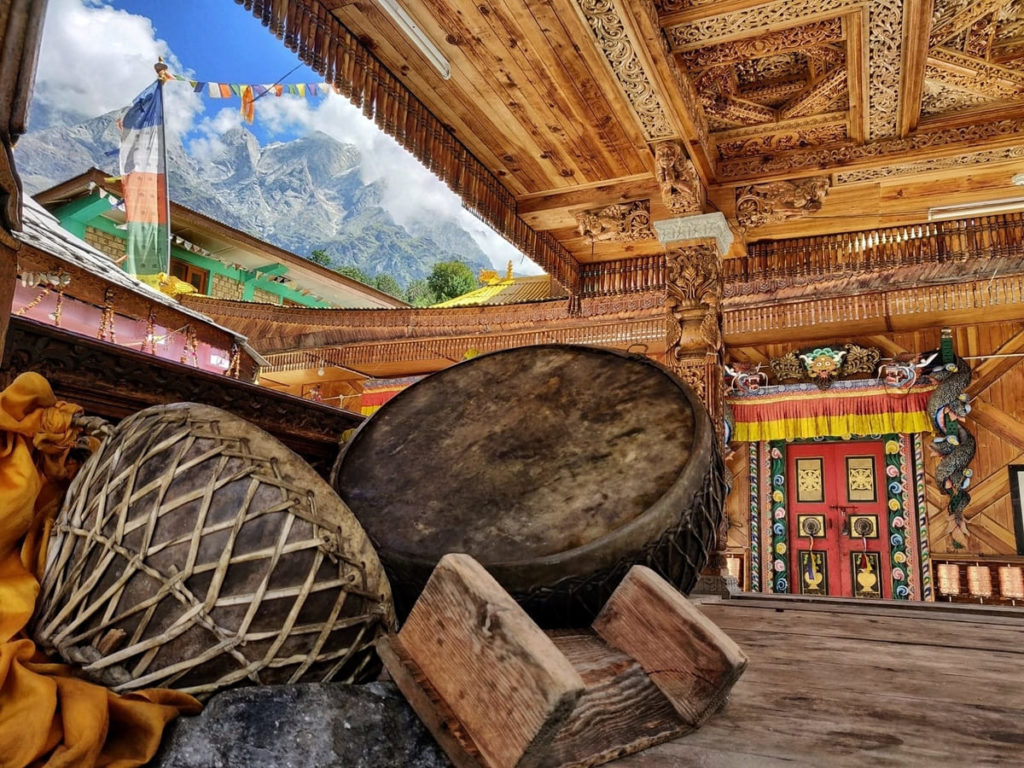
View of Kinner Kailash from Sangla town
The back-side view of Kinner Kailash is clearly visible from Kamru village and Sangla town, whereas the front-side can be best viewed (and photographed) from Roghi, Kalpa or Reckong Peo.
This is how I captured the back-side of Kinner Kailash from the Sangla Buddhist Monastery. A classic view indeed!
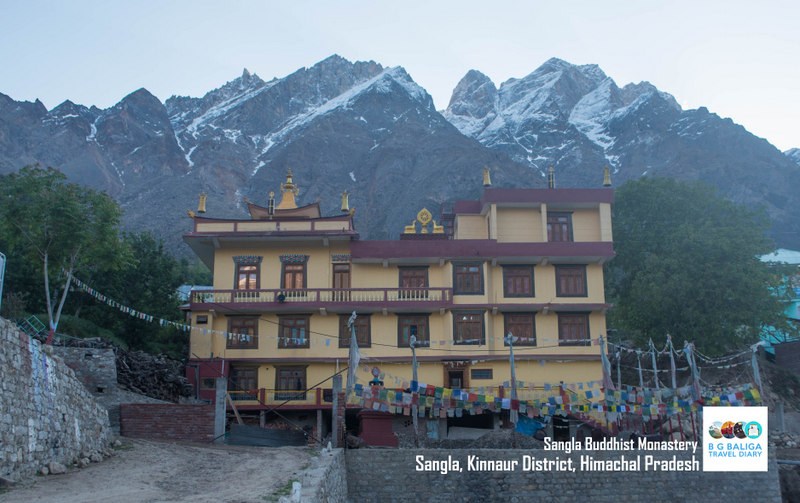
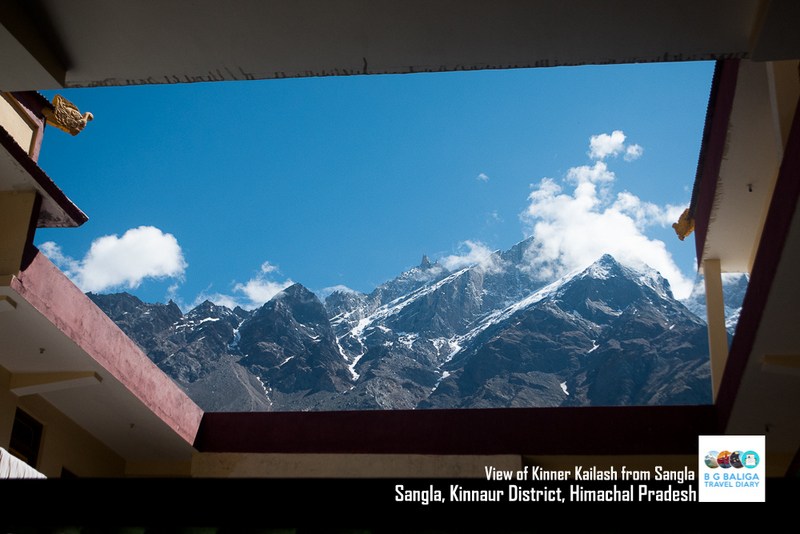
Lesser visited places in Sangla valley
Sangla (or Baspa) valley is the most verdant of Kinnaur offering plenty of spectacular sceneries. Sangla valley shares a border with Tibet on the east, Garhwal and Uttarkashi of Uttarakhand on the south.
Mountain ranges of lesser Himalayas separates it from Pabbar valley of Shimla.
Some hidden gems of Sangla valley are:
- Baspa riverside
- Rani Kanda meadows
- Sangla Kanda lake and meadows
- Kamru Kanda
- Chansu village
- Batseri village
- Tukpa valley entry gate
- Trout fish farm
- Dumti meadows
- Karu Devta temple of Dumti
- ITBP Check posts at Nagasti and Dumti
- Nagdum stream
- Mighty Baspa glacier
- Snowfields and snow-slopes of upper Baspa valley
- Azad Kashmir (place with a strange name but idyllic meadows)
- Trekking trails like Lamkhaga, Borasu, Khimloga and Chitkul-Charang (Kinnaur Kailash Parikrama) pass.
India’s last village – Chitkul
Chitkul is India ‘s last village from Tibet side which can be reached via Road. The distance from Sangla to Chitkul is 22 Kilometer and people throng into this place to experience the beauty of mother nature which is famous for the Snow-capped Mountains, Baspa River & Many more. Potatoes grown at Chitkul are one of the best in the world and are very costly.

Trekking trails in Sangla valley
Sangla Valley of Kinnaur is gateway to many High Altitude Himalayan Treks like Lamkhaga Pass, Rupin Pass, Borasu Pass & Many more.
These trails can either start or end in Sangla valley
- Lamkhaga Pass: Either start from or end at Chitkul.
- Sangla Kanda hike: A high mountain pasture near Sangla village
- Rupin Pass trek: Either start from or end at Sangla Town.
- Borasu pass trek: Either start from or end at Chitkul.
- Buran Ghati trek : Either start or end at Brua village of Sangla valley.
- Charang-Chitkul trek: Either start or end at Chitkul village of Sangla valley.
TL;DR
Sangla Valley is a must-visit place for adventure seekers, Tourists & travelers across the world. I will rate this valley 9 out of 10. Please don’t miss exploring this place if you plan an adventure trip around Kinnaur & Spiti. A must visit the region of Himachal Pradesh indeed!
- Exploring Sangla – A Ravishing River Valley in Kinnaur – July 19, 2025
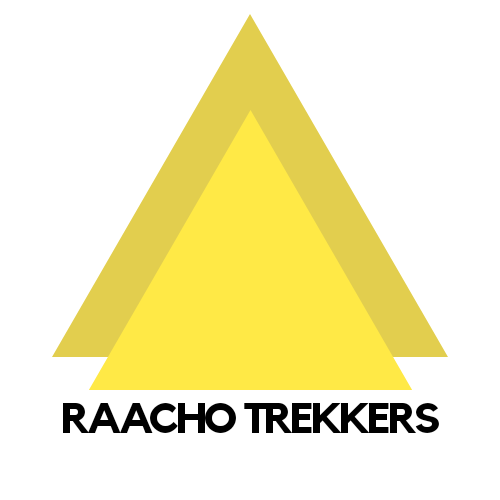
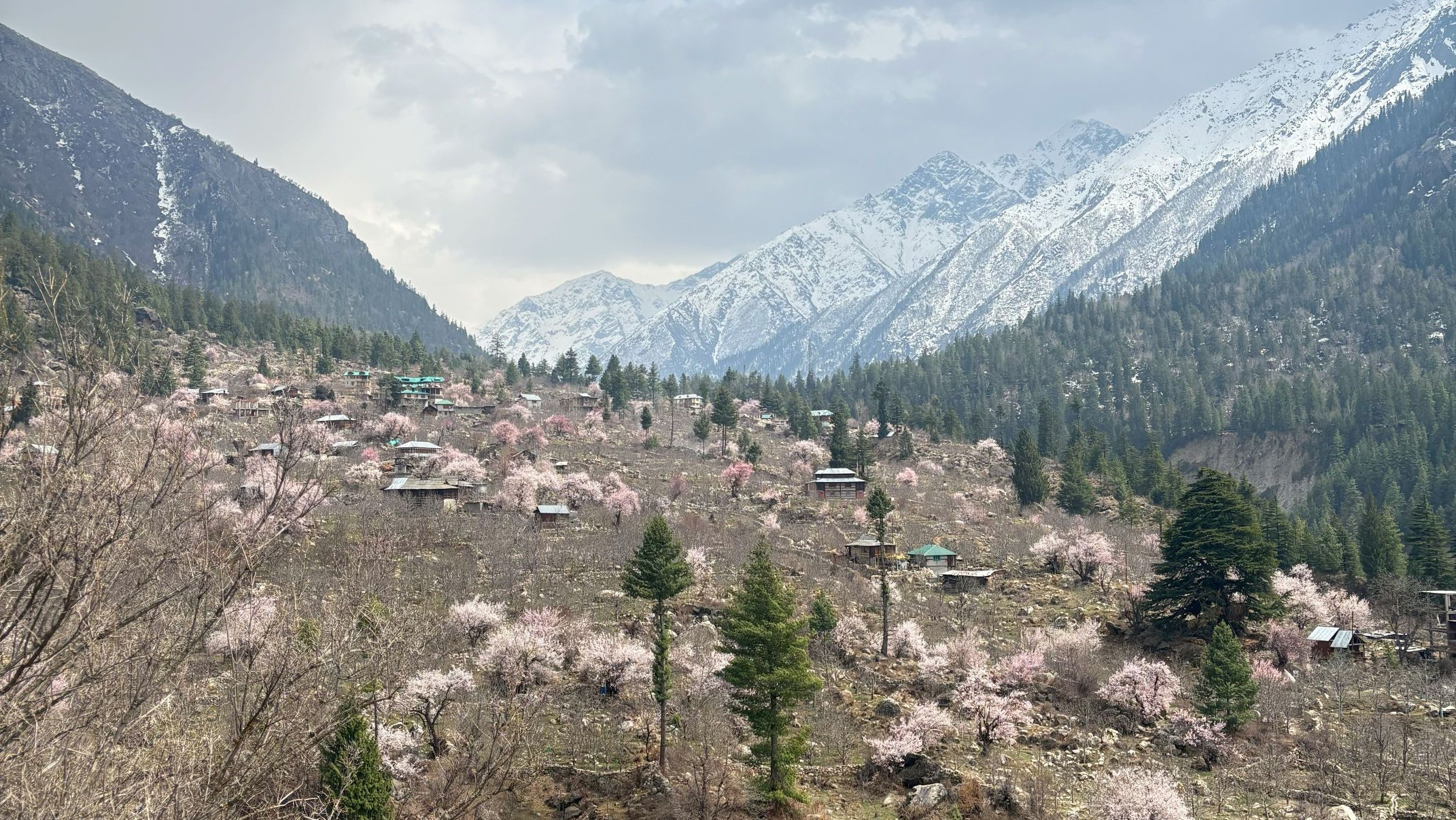
Leave a Reply